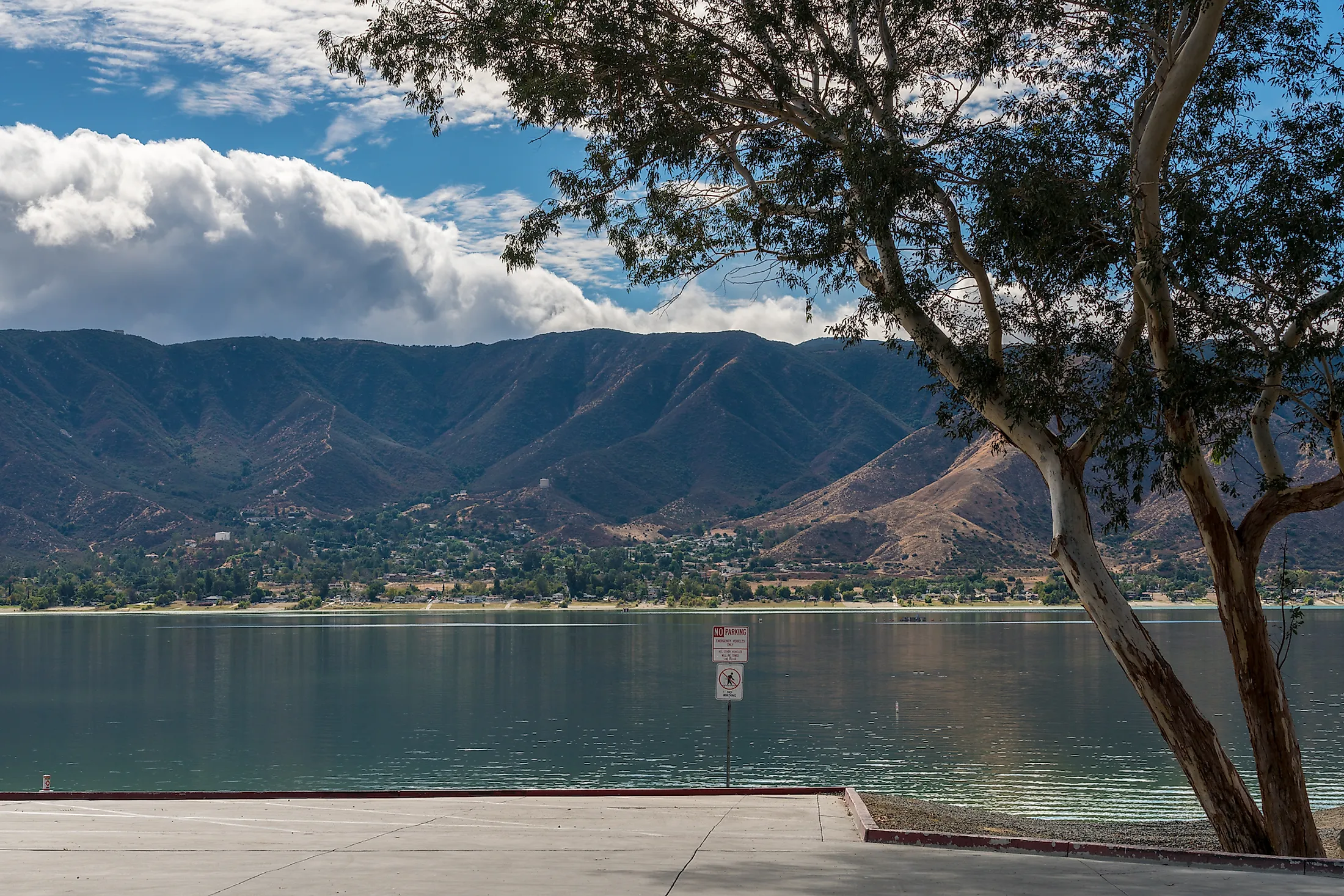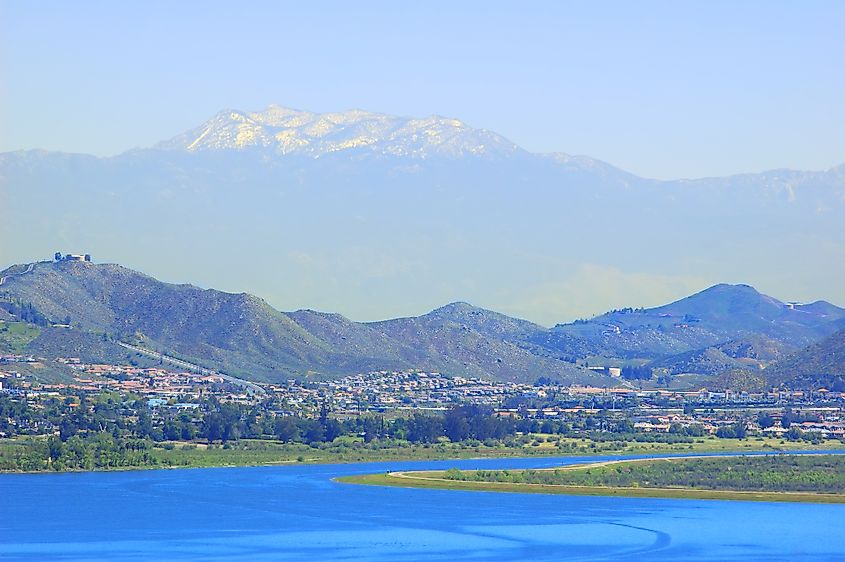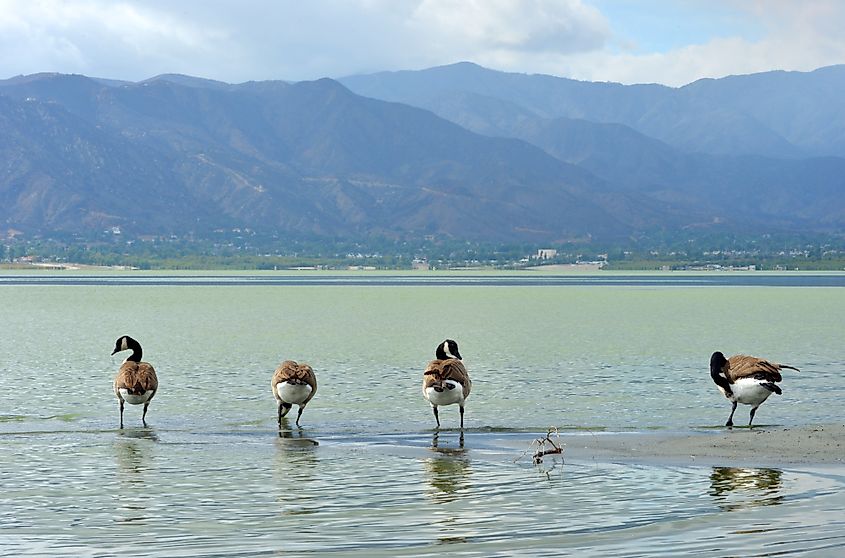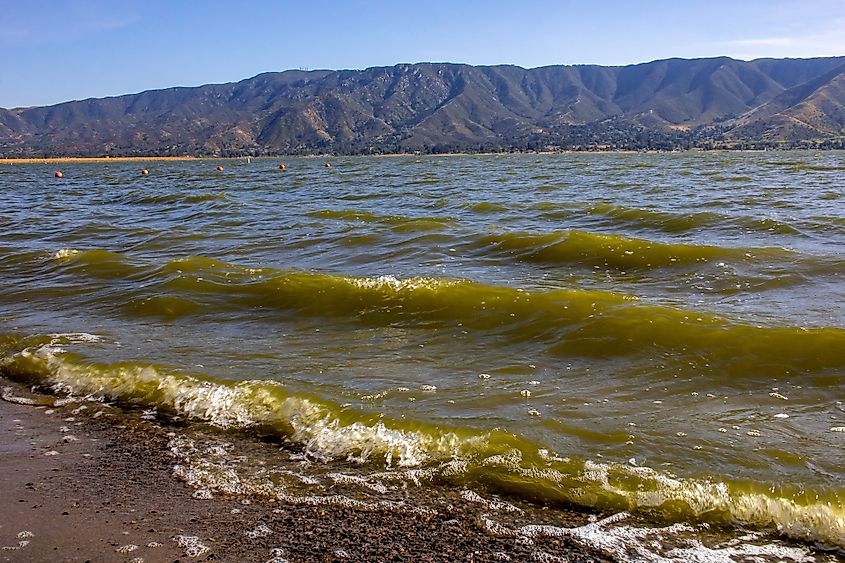
Lake Elsinore
Lake Elsinore is a lake located in a city of the same name, in Riverside County, California. The lake itself is a freshwater lake measuring roughly 12 square kilometers. The residential area was once a small lake resort community, but is now a suburban city of some 70,000 residents. The city of Lake Elsinore consists of eleven different districts: Aberhill, Ballpark, Business, Country Club Heights, East Lake, Historic District, Lake Edge District, Lake Elsinore Hills, Lakeview, North Peak and Riverview.
Climate
The climate in the area is predominantly mild and semi-arid. The region experiences hot, mostly rainless summers, while winters are mild and wetter. Usually, the hottest month of the year is July, with the coldest being in December. The wettest month, on average, is February, and the dryest is June.
Geography Of Lake Elsinore

Lake Elsinore is the largest natural freshwater lake in Southern California, and is at the lowest part of the San Jacinto River watershed. The lake itself sits where the river comes to an end. The headwaters, however, where the river starts, come from two different areas, each which spawn one of the major forks of the river. The North Fork stems from San Jacinto Peak, while the South Fork flows from Lake Hemet.
The water levels on the lake fluctuate with the climate, and can drop significantly in times of drought. When water levels are high, the overflow from the lake spills into the Temescal Wash, which then drains into Temescal Creek. This creek also leads to Santa Ana River, outside of the city of Corona, eventually flowing all the way to Orange County and the Pacific Ocean, near Huntington State Beach.
To the west of Lake Elsinore are the Elsinore Mountains. This range is part of the larger Santa Ana Mountain Range, which contains the Cleveland National Forest and the El Cariso. The lake and city is also south east of Wildomar, and runs into the edge of the Temescal Canyon. Similarly, on the eastern side of the lake the soft, worn hills of the Temescal Mountains can be found.
Wildlife In Lake Elsinore

The lake itself is home to a number of different species of fish. Fishing recreationally is common here, and many of the species are caught for sport, but can also be eaten. They include largemouth bass, striped bass, black crappie, rainbow trout, channel catfish, blue catfish, white catfish, bluegill, redear sunfish and green sunfish.
As far as mammals are concerned, common species in the area include coyotes, squirrels, racoons, skunks, and possums. Bird species range from geese to vultures, eagles, woodpeckers, jays and sparrows.
Threats
Harmful algae blooms have been a concern in the lake during some seasons and in some years. These blooms, though naturally occurring, can cause problems, and render the waters unsafe for swimming.
The blue-green algae has been a problem throughout the years, and rising temperatures tend to increase the populations of algae in the lake. Similarly, an overabundance of certain types of fish, which feed on zooplankton in the waters, can cause a chain reaction which deteriorates the quality of the lake. If there are too many of these fish - many of which have been artificially introduced to the waters - they eat the zooplankton in huge quantities. This is a problem because it is the zooplankton that eat the algae, and without them, the algae will bloom and grow at alarming speeds.

This algae is, essentially, toxic. For humans, coming in contact with it can cause skin irritations, as well as eye irritations. More generally, the algae removes oxygen from the lake, so large amounts of it can have devastating effects on the lake’s ecosystems. Other species which rely on oxygen in the water become sick or die out completely, and if left unchecked, this type of algae cna wipe out entire lake ecosystems. Luckily, in the case of Lake Elsinore, though the lake has been closed at times for algae treatment, it has been able to be restored to safe levels. Large populations of both carp and shad have been removed from the lake in the last 10 years to help reduce this issue, and a Lake Watch program was put in place to monitor the levels of oxygen and algae in the waters with the hope of reducing these concerns in future.











